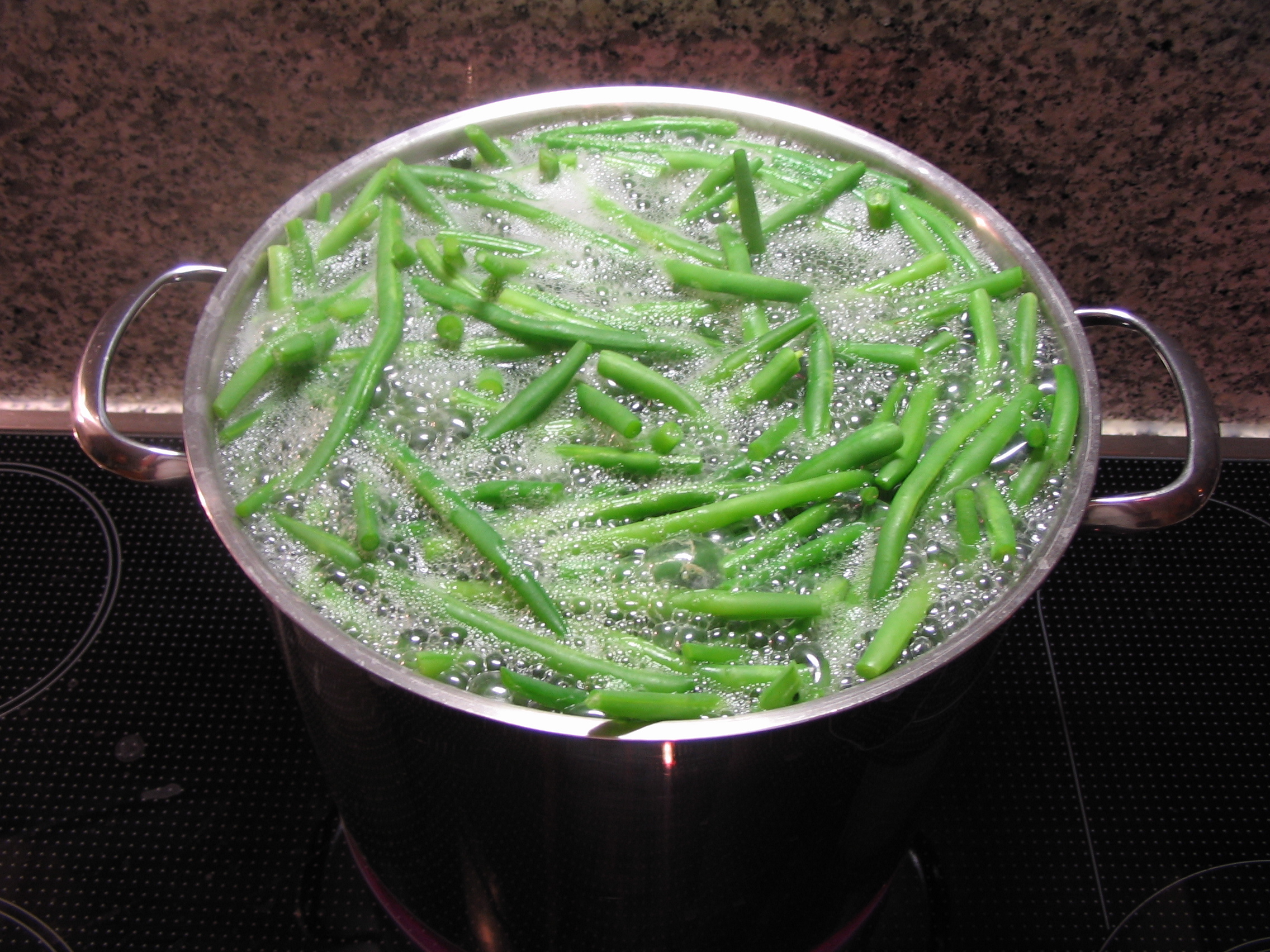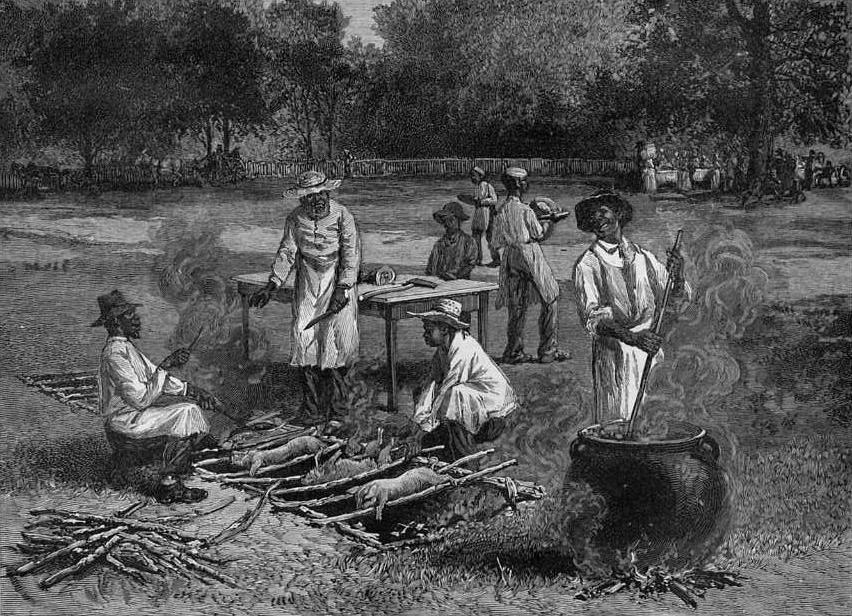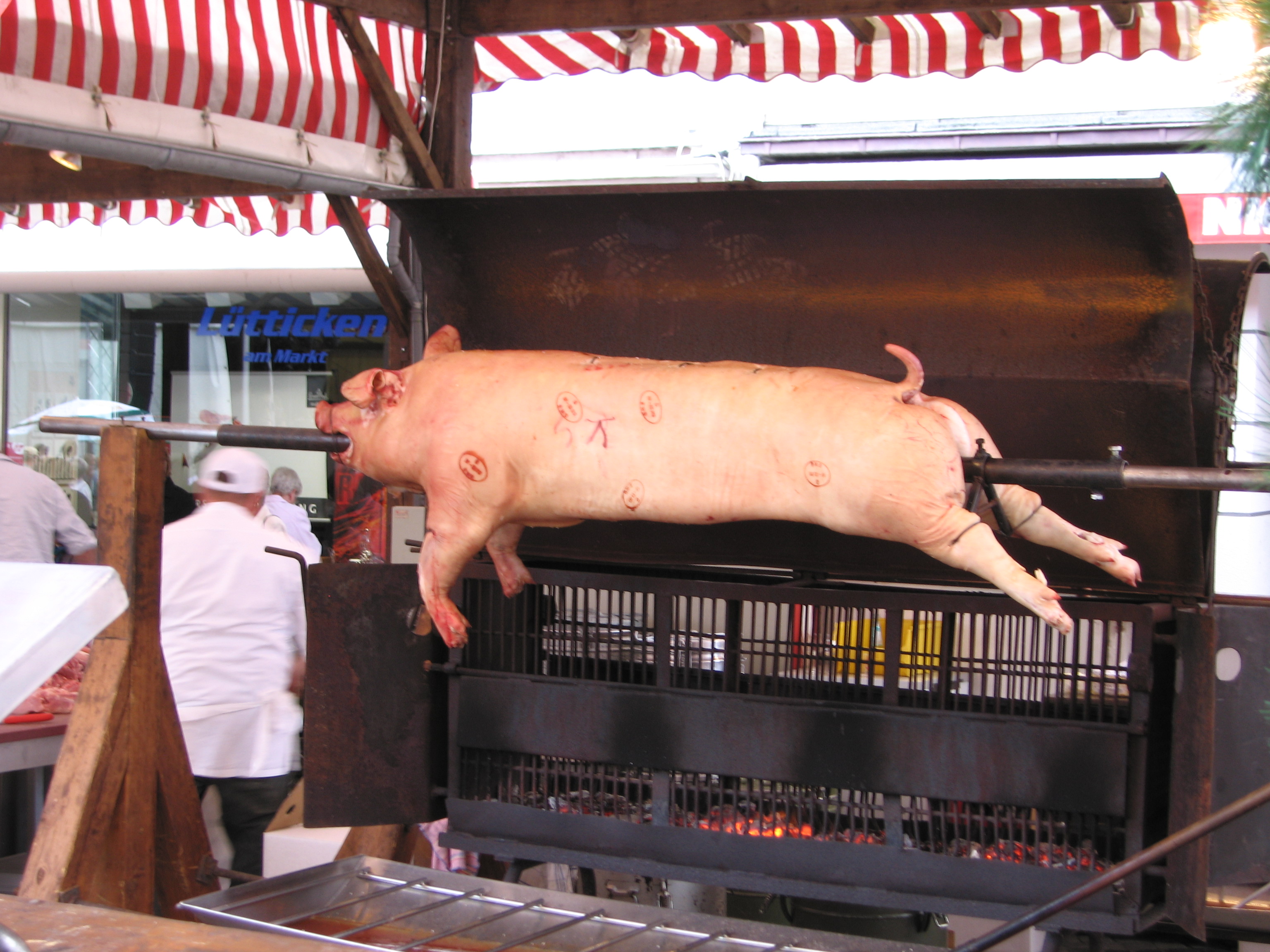|
Kālua
Kālua is a traditional Hawaiian cooking method that utilizes an ''imu'', a type of underground oven. The word "''kālua''" ("to cook in an underground oven" in the Hawaiian language) may also be used to describe the food cooked in this manner, such as kālua pig or kālua turkey, which are commonly served at lūʻau feasts. The word ''lūʻau'' is the Hawaiian name for the taro leaf, which, when young and small resembles cooked spinach after being steamed for a few hours. The traditional lūʻau was eaten on the floor over ''lauhala'' mats (leaves of the hala tree woven together). Traditionally, a hardwood fire is built inside a pit large enough to contain the food to be cooked, the stones, and the vegetation used to cover the food. Stones are placed on top of the fire in the pit, taking around two to three hours to reach their maximum temperature. Most important is the selection of stones that contain very little moisture to avoid stones exploding from the steam generated ... [...More Info...] [...Related Items...] OR: [Wikipedia] [Google] [Baidu] |
Lūʻau
A lūʻau ( haw, lūʻau, also anglicized as "luau") is a traditional Hawaiian party or feast that is usually accompanied by entertainment. It may feature food such as poi, ''kālua puaʻa'' (kālua pig), poke, lomi salmon, ʻopihi, and haupia, beer, and entertainment such as traditional Hawaiian music and hula. Among people from Hawaiʻi, the concepts of "lūʻau" and "party" are often blended, resulting in graduation lūʻau, wedding lūʻau, baby lūʻau, and birthday lūʻau. History In ancient Hawaiʻi, men and women ate meals separately. Additionally, commoners and women were not allowed to eat foods that were rarely eaten or foods that were only served during special occasions. However, in 1819, King Kamehameha II removed all the religious laws that were practiced. King Kamehameha II performed a symbolic act by eating with the women, thus ending the Hawaiian religious kapu (taboo) system. This is when the ''lūʻau'' parties were first created. Food Earlier, suc ... [...More Info...] [...Related Items...] OR: [Wikipedia] [Google] [Baidu] |
Hawaiian Cuisine
The cuisine of Hawaii incorporates five distinct styles of food, reflecting the diverse food history of settlement and immigration in the Hawaiian Islands. In the pre-contact period of Ancient Hawaii (300 AD-1778), Polynesian navigation, Polynesian voyagers brought plants and animals to the Islands. As Native Hawaiians settled the area, they fished, raised taro for ''poi (food), poi'', planted coconuts, sugarcane, sweet potatoes and yams, and cooked meat and fish in earth ovens. After First contact (anthropology), first contact in 1778, European cuisine, European and Cuisine of the United States, American cuisine arrived along with missionaries and whalers, who introduced their own foods and built large sugarcane Sugar plantations in Hawaii, plantations. Christian missionaries brought New England cuisine while whalers introduced salted fish which eventually transformed into the side dish lomi salmon, lomilomi salmon. As pineapple and sugarcane plantations grew, so did demand f ... [...More Info...] [...Related Items...] OR: [Wikipedia] [Google] [Baidu] |
Cuisine Of Hawaii
The cuisine of Hawaii incorporates five distinct styles of food, reflecting the diverse food history of settlement and immigration in the Hawaiian Islands. In the pre-contact period of Ancient Hawaii (300 AD-1778), Polynesian voyagers brought plants and animals to the Islands. As Native Hawaiians settled the area, they fished, raised taro for '' poi'', planted coconuts, sugarcane, sweet potatoes and yams, and cooked meat and fish in earth ovens. After first contact in 1778, European and American cuisine arrived along with missionaries and whalers, who introduced their own foods and built large sugarcane plantations. Christian missionaries brought New England cuisine while whalers introduced salted fish which eventually transformed into the side dish lomilomi salmon. As pineapple and sugarcane plantations grew, so did demand for labor, bringing many immigrant groups to the Islands between 1850 and 1930. Immigrant workers brought cuisines from China, Korea, Japan, the Phil ... [...More Info...] [...Related Items...] OR: [Wikipedia] [Google] [Baidu] |
Hawaii
Hawaii ( ; haw, Hawaii or ) is a state in the Western United States, located in the Pacific Ocean about from the U.S. mainland. It is the only U.S. state outside North America, the only state that is an archipelago, and the only state geographically located within the tropics. Hawaii comprises nearly the entire Hawaiian archipelago, 137 volcanic islands spanning that are physiographically and ethnologically part of the Polynesian subregion of Oceania. The state's ocean coastline is consequently the fourth-longest in the U.S., at about . The eight main islands, from northwest to southeast, are Niihau, Kauai, Oahu, Molokai, Lānai, Kahoolawe, Maui, and Hawaii—the last of these, after which the state is named, is often called the "Big Island" or "Hawaii Island" to avoid confusion with the state or archipelago. The uninhabited Northwestern Hawaiian Islands make up most of the Papahānaumokuākea Marine National Monument, the United States' largest protected ... [...More Info...] [...Related Items...] OR: [Wikipedia] [Google] [Baidu] |
Roasted Puaa
Roasting is a cooking method that uses dry heat where hot air covers the food, cooking it evenly on all sides with temperatures of at least from an open flame, oven, or other heat source. Roasting can enhance the flavor through caramelization and Maillard browning on the surface of the food. Roasting uses indirect, diffused heat (as in an oven), and is suitable for slower cooking of meat in a larger, whole piece. Meats and most root and bulb vegetables can be roasted. Any piece of meat, especially red meat, that has been cooked in this fashion is called a roast. Meats and vegetables prepared in this way are described as "roasted", e.g., roasted chicken or roasted squash. Methods For roasting, the food may be placed on a rack, in a roasting pan or, to ensure even application of heat, may be rotated on a spit or rotisserie. If a pan is used, the juice can be retained for use in gravy, Yorkshire pudding, etc. During oven roasting, hot air circulates around the meat, cooking al ... [...More Info...] [...Related Items...] OR: [Wikipedia] [Google] [Baidu] |
List Of Cooking Techniques
This is a list of cooking techniques commonly used in cooking and food preparation. Cooking is the art of preparing food for ingestion, commonly with the application of heat. Cooking techniques and ingredients vary widely across the world, reflecting unique environments, economics, cultural traditions, and trends. The way that cooking takes place also depends on the skill and type of training of an individual cook. A B C File:Fromagerie gruyères-égouttage-4.jpg, The production of Gruyère cheese at the cheesemaking factory of Gruyères, Canton of Fribourg, Switzerland File:Svadbarski Kupus.jpg, Cooking of Svadbarski Kupus (wedding cabbage) in clay pots, Serbia File:Coddled Egg on hash.jpg, A coddled egg atop hash File:Creaming butter - step 3.JPG, Butter being creamed using electric beaters D ... [...More Info...] [...Related Items...] OR: [Wikipedia] [Google] [Baidu] |
Garden Features
A garden is a planned space, usually outdoors, set aside for the cultivation, display, and enjoyment of plants and other forms of nature. The single feature identifying even the wildest wild garden is ''control''. The garden can incorporate both natural and artificial materials. Gardens often have design features including statuary, follies, pergolas, trellises, stumperies, dry creek beds, and water features such as fountains, ponds (with or without fish), waterfalls or creeks. Some gardens are for ornamental purposes only, while others also produce food crops, sometimes in separate areas, or sometimes intermixed with the ornamental plants. Food-producing gardens are distinguished from farms by their smaller scale, more labor-intensive methods, and their purpose (enjoyment of a hobby or self-sustenance rather than producing for sale, as in a market garden). Flower gardens combine plants of different heights, colors, textures, and fragrances to create interest and delight the se ... [...More Info...] [...Related Items...] OR: [Wikipedia] [Google] [Baidu] |
Cooking Techniques
This is a list of cooking techniques commonly used in cooking and food preparation. Cooking is the art of preparing food for ingestion, commonly with the application of heat. Cooking techniques and ingredients vary widely across the world, reflecting unique environments, economics, cultural traditions, and trends. The way that cooking takes place also depends on the skill and type of training of an individual cook. A B C File:Fromagerie gruyères-égouttage-4.jpg, The production of Gruyère cheese at the cheesemaking factory of Gruyères, Canton of Fribourg, Switzerland File:Svadbarski Kupus.jpg, Cooking of Svadbarski Kupus (wedding cabbage) in clay pots, Serbia File:Coddled Egg on hash.jpg, A coddled egg atop hash File:Creaming butter - step 3.JPG, Butter being creamed using electric beaters D ... [...More Info...] [...Related Items...] OR: [Wikipedia] [Google] [Baidu] |
Pit Oven
An earth oven, ground oven or cooking pit is one of the simplest and most ancient cooking structures. At its most basic, an earth oven is a pit in the ground used to trap heat and bake, smoke, or steam food. Earth ovens have been used in many places and cultures in the past, and the presence of such cooking pits is a key sign of human settlement often sought by archaeologists. Earth ovens remain a common tool for cooking large quantities of food where no equipment is available. They have been used in various civilizations around the world and are still commonly found in the Pacific region to date. To bake food, the fire is built, then allowed to burn down to a smoulder. The food is then placed in the oven and covered. This covered area can be used to bake bread or other various items. Steaming food in an earth oven covers a similar process. Fire-heated rocks are put into a pit and are covered with green vegetation to add moisture and large quantities of food. More green vegetati ... [...More Info...] [...Related Items...] OR: [Wikipedia] [Google] [Baidu] |
Pit Barbecue
Pit barbecue is a method and/or apparatus for barbecue cooking meat and root vegetables buried below ground. Indigenous peoples around the world used earth ovens for thousands of years. In modern times the term and activity is often associated with the East Coast of the United States, Eastern Seaboard, the "Barbecue in the United States, barbecue belt", Spanish colonization of the Americas, colonial California in the United States and Mexico. The meats usually barbecued in a pit in these contexts are beef, pork, and goat. California Throughout the New World the indigenous peoples of the Americas cooked in the earth for millennia. The original use of buried cooking in pits in North America was done by the Native Americans of the United States, Native Americans for thousands of years, including by the :Native American history of California, tribes of California. In the late 18th and early 19th centuries eras, when the territory became Spanish Las Californias and then Mexican Alta C ... [...More Info...] [...Related Items...] OR: [Wikipedia] [Google] [Baidu] |
Pig Roast
A pig roast or hog roast is an event or gathering which involves the barbecuing of a whole pig. Pig roasts, under a variety of names, are a common traditional celebration event in many places including the Philippines, Puerto Rico and Cuba. It is also popular in the United States, especially in the state of Hawaii (a luau) and in the Southern United States ( pig pickin'). In Southeast Asia, a pig roast is a staple among the Buddhist, and Christian communities, notably among Catholic Filipinos and Hindu Balinese people, or Buddhist Chinese people. Traditions The tradition of the hog roast goes back millennia and is found in many cultures. There are numerous ways to roast pork, including open fire rotisserie style roasting, and "caja china" style box grilling. Many families traditionally have a pig roast for Thanksgiving or Christmas. In Miami and other areas with large Cuban, Puerto Rican, Honduran or other Caribbean populations pig roasts are often held on Christmas E ... [...More Info...] [...Related Items...] OR: [Wikipedia] [Google] [Baidu] |
Pachamanca
Pachamanca (from Quechua ''pacha'' "earth", ''manka'' "pot") is a traditional Peruvian dish baked with the aid of hot stones. The earthen oven is known as a ''huatia''. It is generally made of, lamb, mutton, alpaca, llama, guanaco, vicuna, pork, beef, chicken, or guinea pig, marinated in herbs and spices. Other Andean produce, such as potato or chuño (naturally freeze-dried potato), ''habas'' (fresh green lima beans in pods), sweet potato, mashua, oca, ulluco, cassava, yacon, plantain, humitas (corn cakes), ears of corn, and chilli, are often included in the baking. The dish is primarily made in the central Peruvian Andes in three regions: 1) The upper Huallaga valley, in Huánuco and Pasco vicinity, where it is made with pork and seasoned with '' chincho'' and ''huacatay'', two local herbs; 2) in the Mantaro valley and neighboring area around the cities Huancayo, Tarma, and Jauja, they use lamb and a different seasoning; and 3) in several places of Ayacucho department. In th ... [...More Info...] [...Related Items...] OR: [Wikipedia] [Google] [Baidu] |










